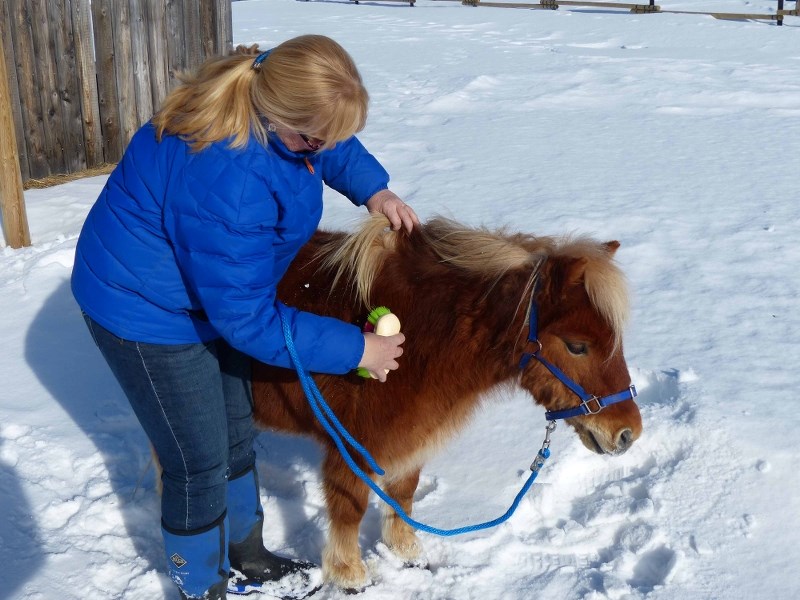Those critters that look like woolly mammoths walking around in your field are simply your equine buddies showing off their wonderful winter hair.
If your horses are like mine, some of the extra hair is starting to shed out, so some quality attention on your part will make them more comfortable.
Grooming your horse in winter has several benefits with the most important one being you have your hands on your horse and can check for any possible injuries, body condition and any issues that might need your attention. As our hours of daylight increase, your horse will start shedding out some of the extra hair. This process can cause the horse to be quite itchy and he will seek out places to scratch. On occasion, the scratching can result in a surface injury that you may need to address.
We certainly are not done with winter yet, so we don’t want to strip off all the winter hair, but proper grooming will get rid of the loose hair, remove dirt and dead skin cells (known as ‘scurf’) from the horse’s skin. If the skin surface is not kept healthy and you have hair mats occurring, your horse may develop bacterial or fungal problems on the skin surface, and nobody wants that.
One suggested grooming regime is as follows, although you may have your own that works just as well.
The first step is to rub the currycomb (oval shaped rubber brush with rounded rubber ‘teeth’) in a small, circular pattern on the horse’s body. This increases circulation and allows the dirt and mud to come to the surface. Ideally, currying should be done daily, although I have too many horses and not enough time to do this. Mine get a good curry every time I work them in the winter and sometimes when I have some time to just hang out with my horses.
The next step is to use the larger firm-bristled brush starting at the crest of the neck and brushing off the dirt and scurf lifted by the currying. Short, flicking strokes are the most effective. Do the entire body including the tops of the legs.
The lower portion of the legs may require more attention depending on the conditions. If the legs are relatively clean (no mud), then brushing may be sufficient. Be careful not to use anything too firm or harsh on the lower legs, as there is not much covering there (no currycombs below the knees). If you have to deal with mud, then you may have to actually wash the lower limbs (if you have a heated barn or if the weather permits). Make sure you dry the legs thoroughly. This is a good time to inspect the legs carefully for any scratches or cuts, as these areas have more contact with mud and can be more prone to infection.
Next, you want to clean out your horse’s feet. Using a hoof pick, clean out each hoof. Pay attention to the smell, as winter mud can make a horse prone to painful bacterial infections such as thrush. Check for anything else out of the ordinary.
Lastly, use the small, soft brush to brush the horse’s coat (starting at the crest of the neck) to remove any remaining dirt or scurf. Remove any tangles from the mane and tail with your fingers or a proper comb.
You will now have a shiny, happy horse ready to face the elements again!




